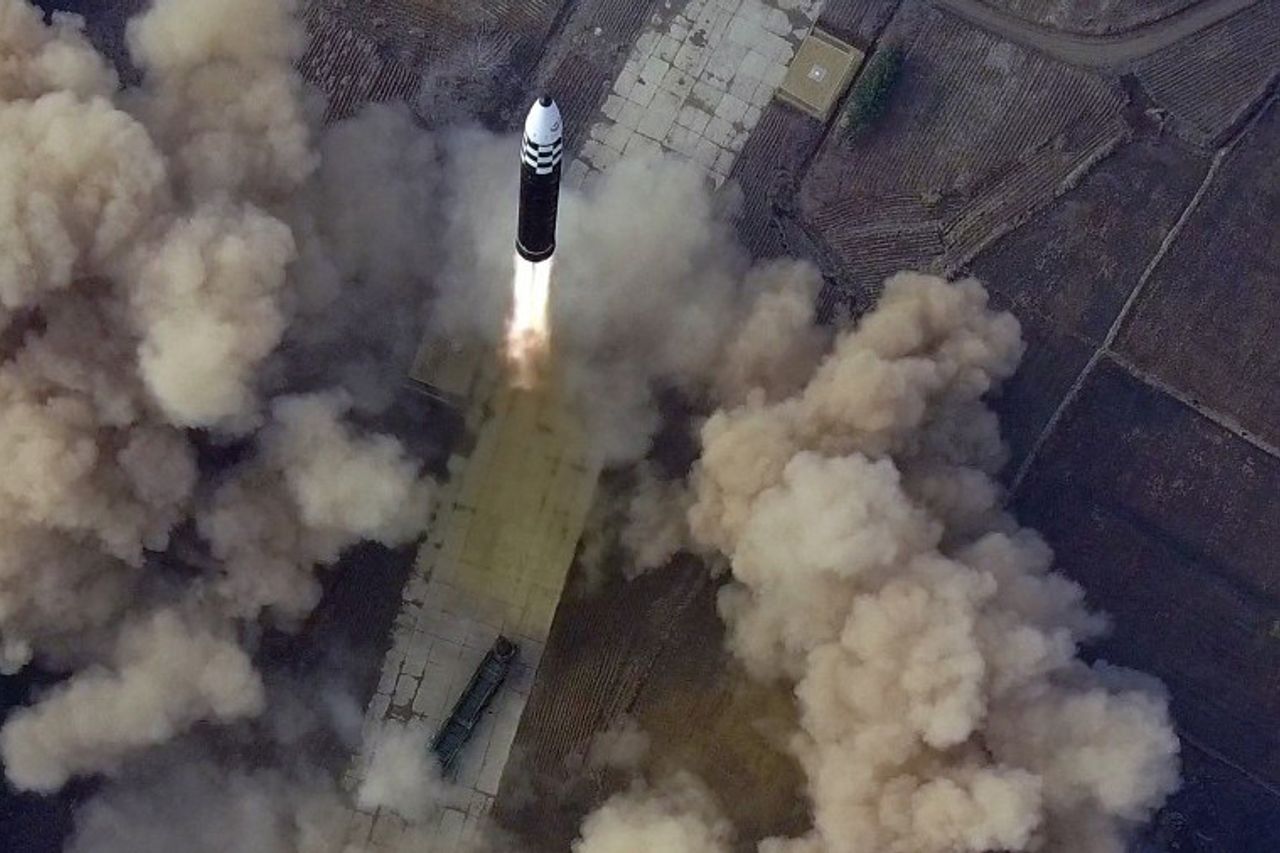The Value Of The ICBM Missile Launched By North Korea Last Week Is Not The Hwasong-17 But The Hwasong-15, This Is South Korea's Explanation

JAKARTA - South Korea's military called last week's launch of North Korea's ballistic missiles, using older and smaller ballistic missiles instead of the new Hwasong-17 ICBM it still has, part of efforts to prevent negative domestic reactions to the failed launch.
South Korean and US officials have concluded that the March 24 launch appeared to be the Hwasong-15 ICBM, said a defense ministry official, who spoke on condition of anonymity because of the sensitivity of the matter.
Washington has not publicly considered it, with Pentagon spokesman John Kirby telling reporters on Tuesday the test is still being analyzed.
North Korea's first test-fired Hwasong-15 was in November 2017, before imposing a moratorium on ICBM testing that ended with last week's launch.
Open-source analysts noted discrepancies in videos and photos released by North Korean state media after the launch, saying shadows, weather, and other factors suggested it was from earlier tests, possibly the failed launch on March 16.

"The selection of the Hwasong-15, which was more reliable with a successful test in 2017, could be intended to block rumors and ensure regime stability, by conveying a message of success in the shortest possible time, after Pyongyang residents witnessed the failure," the Defense Ministry wrote in a report. provided to parliament and obtained by Reuters, as reported on March 30.
The test could also be aimed at enhancing its status as a military power and increasing bargaining power with South Korea, the United States, and the international community, the report concluded.
US and South Korean officials said tests on February 27 and March 5 involved the Hwasong-17 system, possibly in preparation for a long-range launch. However, North Korea has never acknowledged the March 16 launch or its reported failure.
Debris from the failed test rained down on Pyongyang, Ha Tae-keung, a South Korean lawmaker briefed by the military told reporters on Tuesday.
The failure prompted North Korea to tell a 'big lie', saying the March 24 launch of the Hwasong-15 was Hwasong-17 to avoid negative domestic public opinion, Ha said.
As previously reported, the missile launched last Thursday flew for 67.5 minutes to a range of 1.090 km (681 miles), with a maximum altitude of 6.248.5 km (3.905 miles) according to state media reports.
The figure is similar to data reported by Japan and South Korea, but further and longer than the first test of the Hwasong-15, which flew for 53 minutes to an altitude of about 4.475 km and a range of 950 km.
Thursday's missile characteristics, such as ascending acceleration, combustion, and part separation time were similar to those of the Hwasong-15, although it was said to fly further and higher, the report continued.
South Korean officials assess North Korea may have modified the Hwasong-15, or launched it without a significant test payload to increase its range.
VOIR éGALEMENT:
Meanwhile, analysts said the March 16 explosion may have been caused by a problem in the engine. The ministry report noted that the Hwasong-17 required a more sophisticated cluster of four Paektusan-class engines compared to the two Hwasong-15s, and the eight days between launches was insufficient to analyze the cause of the failure.
"If March 16 is the Hwasong-17 failure and March 24 is the Hwasong-15, it clearly shows the Hwasong-17 still has dental problems," said Vann Van Diepen, a former US government official involved in weapons of mass destruction and nonproliferation.
A second successful test of the Hwasong-15 will confirm its reliability, but if the increase in performance is simply due to reduced payload, then its significance will be limited, he said.
